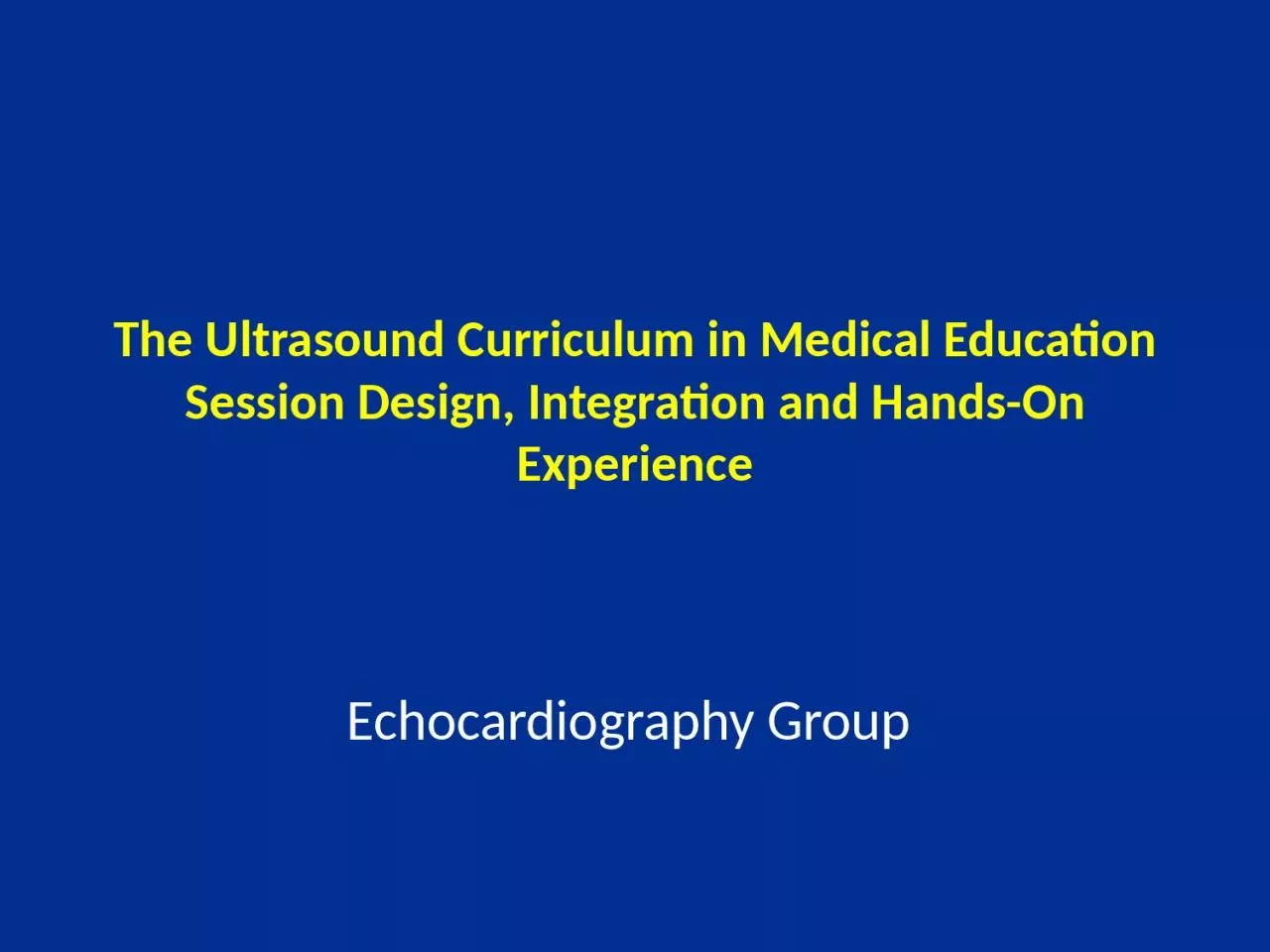

Session Design Integration and HandsOn Experience Echocardiography Group Considerations for Design and Implementation Curriculum Format Class sizenumber of student participants Faculty availability ID: 921297
Download Presentation The PPT/PDF document "The Ultrasound Curriculum in Medical Edu..." is the property of its rightful owner. Permission is granted to download and print the materials on this web site for personal, non-commercial use only, and to display it on your personal computer provided you do not modify the materials and that you retain all copyright notices contained in the materials. By downloading content from our website, you accept the terms of this agreement.
Slide1
The Ultrasound Curriculum in Medical EducationSession Design, Integration and Hands-On Experience
Echocardiography Group
Slide2Considerations for Design and Implementation
Curriculum Format
Class size/number of student participants
Faculty availability
Resources (access to ultrasound machines,
sim
machines, standardized patients)
Target audience/level of learners
For this sample module, we are assuming learners are MS 1/2 (preclinical) with basic understanding of
knobology
, basic principles of ultrasound, some scanning exposure, basic knowledge of cardiac anatomy and physiology
Slide3Overview of Potential Structure of Modules
Slide4Goals and Learning ObjectivesGoal: Understand the basic structure of the heart through the use of standard ultrasound.
LO’s:
Identify the major structures (chambers and valves) in ultrasound images of the heart.
Properly orient the patient to obtain (or recognize and describe) the standard views of transthoracic cardiac ultrasound and identify the utility of each view.
Demonstrate sensitivity to the patient while performing cardiac ultrasound. (Assumes students are scanning).
Slide5Potential LO’s for Future SessionsPhysiology (including introduction to Doppler on ultrasound)
Correlate events in the cardiac cycle with their appearance on ultrasound.
Physical Diagnosis
Effectively communicate findings to patient, other student, or other healthcare professionals
Relate echocardiographic views to cardiac auscultations
Pathology
Understand how
valvular
dysfunction alters normal
doppler
flow on ultrasound.
Slide6PreworkGoal: Review cardiac anatomy and physiology, basic components of ultrasonography
Possible approaches to accomplish goal:
Online modules (with or without assessment quiz)
Lecture based session
Textbook readings
Possible formative assessment of
prework
completion/understanding
Slide7Module Structure Review of
prework
TBL session, clicker questions integrated into a large group session
Break into smaller groups for ultrasound component
Scanning session or demonstration by faculty or simulation session
Approach implemented determines students’ skill acquisition
Slide8Pulmonic Valve, RVOT (sometimes)
Aorta
LV, RV,
mitral valve
LA
Tricuspid
Valve,
RA
Aortic
Valve
Slide9Assessment of Students Computer module to test students’ ability to properly identify probe placement and/or 3 dimensional plane of echo images.
Case vignette to ask students which cardiac view would be appropriate to evaluate necessary structures.
Slide10Sample Student Assessment (MS 1)35 year old woman with mitral valve prolapse
Which cardiac ultrasound view(s) is/are most appropriate to visualize the pathologic structure(s)? Explain your reasoning.
Slide11Sample Student Assessment (MS 2)
35 year old woman presents to the ER with atypical chest pain and shortness of breath. She is found to have a murmur and click on cardiac auscultation. (could also give presentation and have students listen to the heart sounds with headphones and identify the murmur and click themselves).
Which cardiac ultrasound view(s) is/are most appropriate to visualize the pathologic structure(s)? Explain your reasoning.